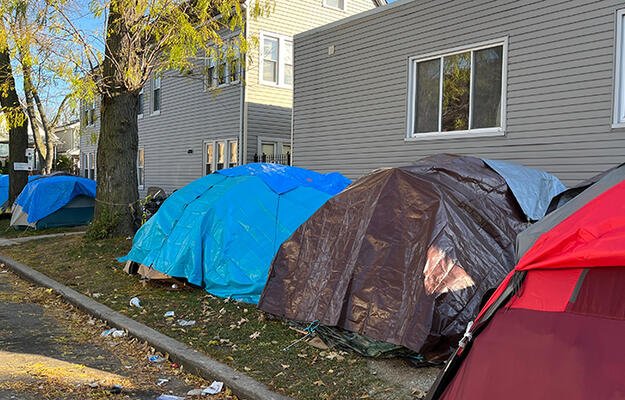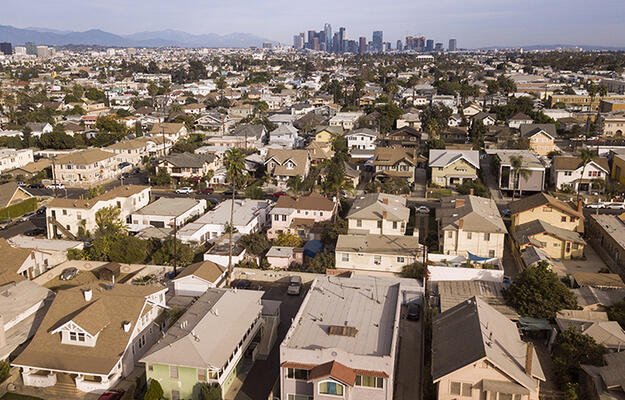
(pixelheadphoto digitalskillet / Shutterstock)
How Landlords Can Help Close the Digital Divide for Their Tenants
The COVID-19 pandemic has changed the way we work, learn, and connect, threatening our health and economic stability while highlighting entrenched disparities. As medical care, social services, and financial services have moved to virtual platforms, internet access has become an increasingly important amenity.
Providing internet access is one key way landlords can support tenants during and after the pandemic and distinguish themselves from other landlords in a tight housing market. Internet services are critical for meeting high tenant demand for connectivity (PDF), supporting landlords’ communication with tenants, and helping residents connect to education, employment, and health care opportunities. Overall, improved access to telehealth and social connections during the pandemic has had major public health benefits.
In 2019, more than 13 million renter and owner-occupied households did not have internet access. Half of this population are people of color, and low-income and rural communities are also more likely to be disconnected. Systemic barriers, such as expensive internet packages or mandatory credit checks, may prevent families from connecting. And some communities—both urban and rural—are not wired for broadband at all (PDF), widening the “homework gap” and other disparities among marginalized communities.
Before the pandemic, renters were less likely to have stable high-speed internet and device access than homeowners. And the pandemic has likely widened gaps between these groups because of economic hardship, increased demand, and infrastructure limitations.
Home Internet and Device Access, by Housing Tenure
Households living in houses, apartments, or mobile homes in 2019
|
|
Internet access without subscription | Internet access with subscription |
Broadband access (cable model, fiber optic, DSL service) |
Access to laptop, desktop, and/or notebook computer |
||||
| % |
Total households (millions) |
% | Total households (millions) | % | Total households (millions) | % | Total households (millions) | |
| Owners | 1.7 | 1.4 | 89.5 | 70.5 | 83.6 | 59.0 | 83.0 | 65.4 |
| Renters | 3.7 | 1.7 | 81.5 | 35.9 | 78.0 | 28.0 | 67.1 | 29.6 |
Source: Integrated Public Use Microdata Series American Community Survey microdata.
Notes: Approximately 8 million households are neither renters nor owners (living in group quarters, for example) and are thus excluded from the table and analysis. Approximately 8.25 million households lack information on broadband access, and they, too, have been excluded from the table and analysis. Questions about broadband access are only available to those who indicate they have internet access via a paid subscription (not available to those with internet access without a subscription and those without internet access altogether).
Since the start of the pandemic, school districts have led the charge to ensure students were equipped with devices and Wi-Fi to access school online. City governments and nonprofits also contributed to these efforts by expanding free public Wi-Fi hot spots, aggregating public information on low-cost internet plans, and improving broadband speeds. School- and city-led initiatives have largely been successful. According to the US Census Bureau’s Household Pulse Survey, the share of households with children reporting that internet access is always or usually available for educational purposes increased from 89 to 92 percent between May 2020 and February 2021.
But we know less about whether internet access has improved for working-age adults and seniors in rental housing. We also do not know how sustainable current endeavors are. Although hot spots and devices are urgently needed as part of rapid-response efforts, they are not a long-term solution to the digital divide.
Closing the divide requires an all-hands-on-deck approach, and private-market landlords can also play a role in ensuring tenants have affordable internet access.
Public and assisted housing have set an example
For the past five years, the US Department of Housing and Urban Development (HUD) has recognized the importance of securing internet access for renters with low incomes, leading efforts to expand broadband access in public and assisted housing properties. HUD’s ConnectHome initiative supports landlords with HUD-assisted tenants with opportunities to leverage federal and local resources to close the digital divide, including internet access, devices, and training. HUD also published a rule in 2016 requiring the inclusion of broadband in new affordable housing developments and redevelopments.
During the pandemic, many public housing authorities have expanded their efforts to increase connectivity among residents, using HUD-provided resources and external partnerships to fund and distribute devices and dispatch mobile hot spots. Some, including the DC Housing Authority, Housing Authority of the City of Austin, Pinellas Housing Authority, and Fresno Housing Authority, colocate computer labs in their developments. Though the pandemic has likely put in-person computer literacy trainings and other activities on hold, these spaces provide residents with devices and information about digital literacy they might otherwise not have access to.
Private market landlords can also expand access
Before the pandemic, many states and cities were working to close technology equity gaps. For example, states like California and Massachusetts offered tax incentives for developers to include broadband in newly constructed units. And cities across the country were launching public-private partnerships to improve resident access to broadband and digital literacy.
Until the recent COVID-19 relief bills, the federal government has played a limited role in supporting disconnected households that are not HUD assisted. Recent federal guidance allows COVID-19 relief funds to be used to expand rural broadband access (PDF), and rental relief funds can be used to cover the costs of phone, cable, or internet (PDF). Further, the American Jobs Plan promises $100 billion for broadband investments as part of the administration’s $2.3 trillion infrastructure bill.
Landlords can use new and existing resources to improve internet access for disconnected households by engaging in three ways:
- Assessing need. Landlords can engage with advocacy efforts to improve broadband access for disconnected communities. They can use tools like the national broadband map, which provides insights into Wi-Fi access by neighborhood, and pursue deeper engagement with residents through listening sessions or surveys to understand issues like reliability, cost, and access to devices. In some cases, this may mean supporting individual residents or families in signing up for affordable internet service plans, but in others, it may result in negotiating larger deals with internet providers to cover multiple households or common spaces. This playbook has step-by-step guidance for landlords undertaking this process.
- Enhancing infrastructure. Landlords could take a page out of HUD’s book: wiring for broadband should be part of any construction or rehabilitation project. Like any amenity, offering computer labs and free Wi-Fi access in public areas and beyond will increase tenants’ satisfaction and ability to meaningfully participate in school and work, and it could even increase retention and demand for rental units.
- Partnering with others. Landlords don’t have to do it all; they can join citywide efforts already underway. For example, the City of Boston is lowering internet service costs by fostering competition among providers. The city also asks developers to complete a Broadband Ready Buildings Questionnaire before construction to ensure opportunities for broadband are fully explored and pursued.
Internet access and computing devices are essential for tenants connecting with schools, employers, and health care providers. And prospective tenants want high-speed internet (PDF) at home. Landlords can take steps to improve access moving forward, particularly for their lower-income tenants. By assessing resident needs, improving on-site amenities, and connecting with ongoing efforts and partners, landlords can play an important role in ensuring renter households are able to meaningfully participate in school and work, remain socially engaged, and connect to necessary services.


